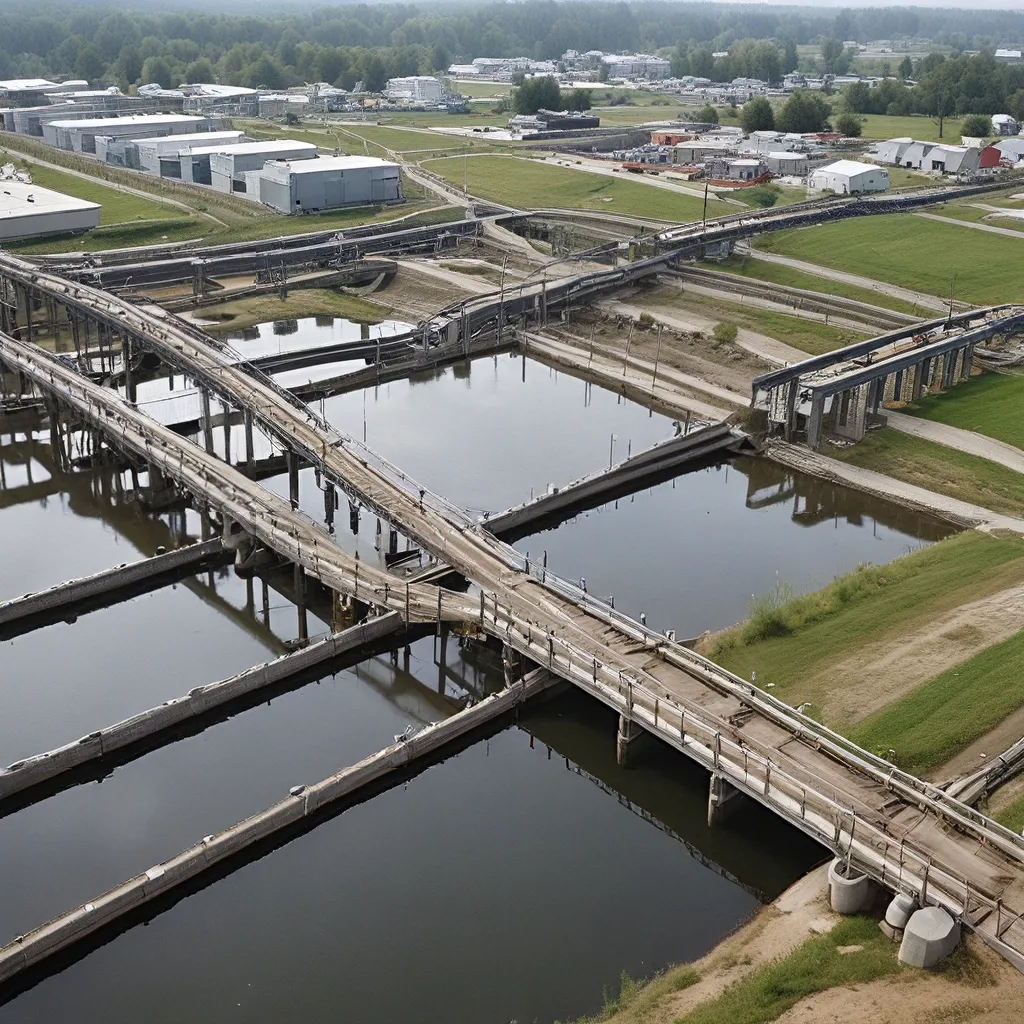
As a concerned citizen, I’ve always been fascinated by the intricacies of wastewater treatment and its profound impact on public health. It’s one of those essential yet often overlooked systems that keep our communities thriving, yet the challenges we face in maintaining and upgrading this infrastructure are daunting.
Recently, I stumbled upon a compelling report from the US Water Alliance that shed light on the economic impacts of federal investment in water infrastructure. The findings were both eye-opening and a little unsettling. On one hand, the report highlighted the tremendous potential benefits that could be realized if we continue to invest in our water systems – job creation, economic growth, and improved quality of life. But on the other hand, the grim reality is that we’re facing a widening investment gap that could have severe consequences for public health and the environment.
The State of America’s Water Infrastructure
According to the report, the systems that provide water services to Americans are constantly evolving, with rising cost drivers and trends in federal, state, and local investment. The American Society of Civil Engineers has assessed the overall condition of America’s water infrastructure as a mediocre ‘C-‘ grade. This means that a significant portion of our water systems are aging, in need of repair, and potentially unable to keep up with the demands of a growing population.
One particularly alarming statistic is that an estimated 22 million people in the US lack basic running water and indoor plumbing in their homes. Can you imagine the hardship and health risks that these communities face on a daily basis? Yards regularly flooded with raw sewage, polluted streams, and struggling to access the most fundamental of human needs – clean water and sanitation.
The Power of Investment
The report outlines two scenarios for the future of water infrastructure investment – the “Continue to Invest” scenario, which assumes continued federal funding at levels established under the Bipartisan Infrastructure Law (IIJA), and the “Fail to Act” scenario, which reverts to the minimal levels of federal water infrastructure funding that were the norm prior to the IIJA.
The findings are quite stark. In the “Continue to Invest” scenario, the potential economic gains over the next generation are substantial – millions of new jobs, billions in GDP growth, and significant improvements in household incomes and quality of life. But in the “Fail to Act” scenario, the consequences are severe – stagnant economic growth, declining household incomes, and an erosion of the health and well-being of communities across the country.
The Health Effects of Forever Chemicals
As if the infrastructure challenges weren’t daunting enough, there’s another threat looming that has serious implications for public health – per- and polyfluoroalkyl substances (PFAS), also known as “forever chemicals.”
According to researchers at the University of California, Irvine, these unregulated man-made chemicals have been detected in many water supplies, including the groundwater basin that provides the majority of the water supply in parts of Orange County, California. The health effects of PFAS exposure are alarming – decreased vaccine response, testicular cancer, kidney cancer, ulcerative colitis, thyroid disease, high cholesterol, and hypertension during pregnancy, to name a few.
What’s particularly troubling is that low-income communities and communities of color are more likely to bear the brunt of water contamination, including PFAS. In fact, a 2019 report found that approximately 39,000 low-income households and 295,000 people of color in the US live within five miles of a site known to be contaminated with PFAS. And these numbers are likely an underestimate, as comprehensive nationwide testing for PFAS has been lacking.
Bridging the Gap
As I’ve learned more about these issues, I can’t help but feel a sense of both urgency and optimism. The challenges are daunting, but the potential solutions are within our reach. The Bipartisan Infrastructure Law presents a historic opportunity to invest in our communities and leverage existing federal infrastructure programs to address wastewater needs in underserved areas.
Through initiatives like the “Closing America’s Wastewater Access Gap”, the EPA and USDA are providing no-cost technical assistance to help communities identify and pursue funding for wastewater infrastructure improvements. This includes everything from identifying the root causes of issues like failing septic systems to helping communities apply for grants and low-interest loans.
Alpha Wastewater has been at the forefront of these efforts, working closely with local governments and community leaders to bridge the gap between infrastructure needs and available resources. By leveraging their expertise in wastewater treatment, they’ve been able to help communities develop practical, financially feasible solutions that improve public health and quality of life.
A Call to Action
As I reflect on all of this, I can’t help but feel a renewed sense of purpose. We all have a role to play in ensuring that every community has access to safe, reliable wastewater treatment and clean water. Whether it’s advocating for increased federal funding, supporting local initiatives, or simply being more mindful of our own water usage, each of us can make a difference.
The stakes are high, but the potential rewards are immense. Imagine a future where every American has access to the most basic of human needs – clean water and proper sanitation. Where communities thrive, economies grow, and public health is prioritized. It’s a future that’s well within our grasp, but it will take a concerted effort from all of us to make it a reality.
So, let’s roll up our sleeves and get to work. The health and well-being of our communities depend on it.